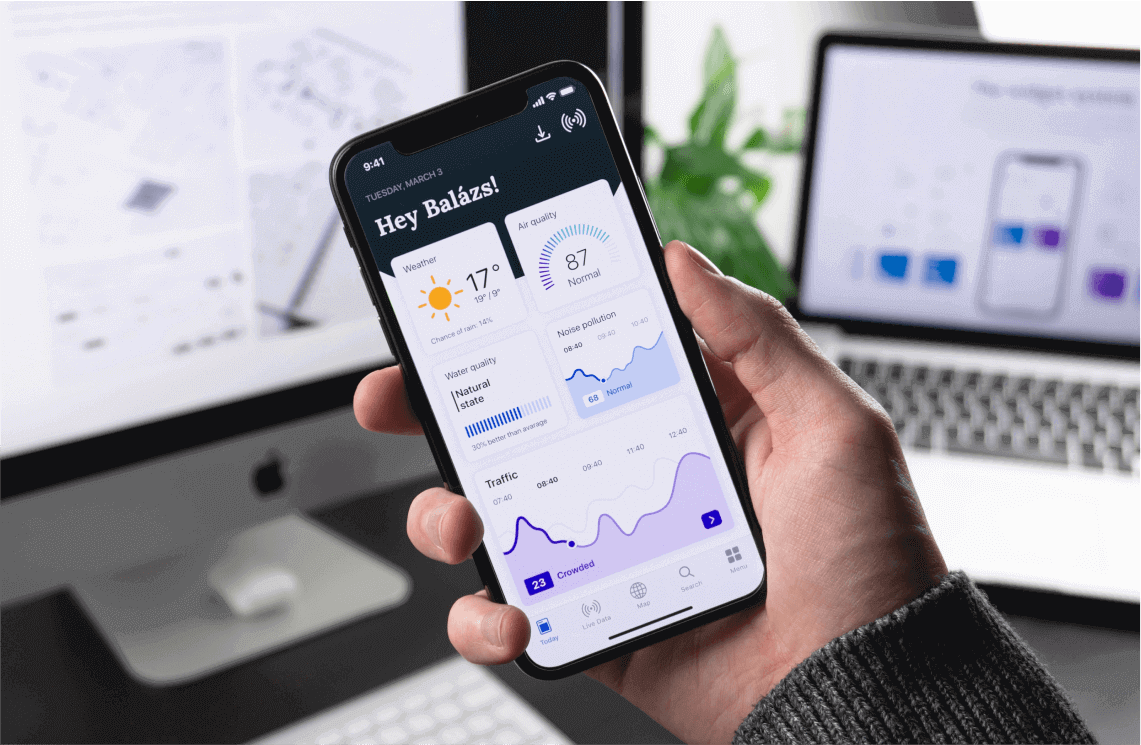How to Differentiate in the Personal Finance Market with a Mobile App for Customers


Dhiman Bhattacharjee
CEO & Founder, Flux Solutions LLC.
6 Min Read
4 May 2022
Mobile apps are now the touchpoint of choice for consumers worldwide for managing their personal financial needs, including bill payments, fund transfers, or taking a new loan to cover temporary cash shortfalls. The superior mobile experience is the new viable means to differentiate. Banks and Fintech companies constantly iterate their consumer mobile apps to ensure they successfully meet or exceed ever-changing customer needs.
The key functionalities of a contemporary consumer finance app include maintaining a savings account, making payments, taking loans, buying insurance, managing investments, trading stocks, tracking credit accounts, making mortgage payments, and buying/selling cryptocurrencies. Today’s finance app centers around financial activities for which consumers traditionally turned to banks. Traditional players, banks, and FinTechs provide these personal services through apps with improved user experience and reduced costs. Apart from conventional banking customers, it also appeals to the millennials' atypical banking customers. They are attached to their smartphone and its apps, including listening to music on iTunes, socializing on Facebook, buying on Amazon, and traveling using Uber. For this generation, banking is more appealing when accessed through a mobile app.

Payment App
2021 has seen a different world; circumstances have played a massive role in quickly promoting digital activities across the board, including in the financial services world. For instance, online payments in general, and mobile payments, have seen significant expansion last year. Mobile payment apps facilitating intuitive, UX-driven payments between individuals and companies have grown exponentially. Easy-to-use UI with guided navigation and simplified transactions has made the mobile payments apps a potent competitor in the traditional payments market. We have seen several banks and Fintechs across geographies enhancing or embracing mobile payment solutions organically or through partnership or acquisition.

Apart from providing payment solutions, these payment apps also function as mobile wallets, proximity payments, and post-pay. Mobile wallets integrate with bank accounts to enable direct costs to other individuals and businesses through the app. Proximity payments allow consumers to make in-person contactless payments using one's smartphones. Post-pay will enable consumers to buy online now and receive the purchase invoice later once the goods are delivered. These capabilities have helped consumers continue with their daily lives while the world was shut down due to the spread of the pandemic.
Loan App
The mobile lending app allows consumers to avail round-the-clock borrowing facility. App-based lending is mostly for small-ticket consumer loans replacing the need to request short-term capital from family and friends. Consumers tap their mobile app for instant loans, omitting the need for a loan-drawn physical loan application process. The loan origination and approval process are instantaneous once the applicant enters their relevant details in the loan application available through the app. If approved, the loan amount is automatically disbursed to the applicant's bank account.

The mobile lending app also allows users to keep track of their online borrowing status, including checking outstanding debt, making periodic payments, and requesting occasional payment deferral. There are also options to sign up for automated payment notifications.
Insurance App
Insurance apps put options at consumers' fingertips. Carriers offer homeowners, renters, vehicle, health, and term life insurance powered through mobile apps. There is usually no paperwork, no human involvement, hence minimal hassle. There are no brokers; instead, there are bots. With instant everything, consumers get an insurance quote in minutes.
Consumers can file claims, get instant approval, and experience a smoother, faster claim resolution and payment through the insurance app.
The Current Trend – the Super-App
Instead of providing a particular service, a super-app offers multiple benefits, including payment, loan, and financial transaction processing, all within one single app. This effectively becomes an all-encompassing self-contained mobile commerce and communication platform easing multiple aspects of personal finance. Banks and financial technology companies are heading more and more towards offering super-apps for their retail customers.

This trend will amplify more in 2022 and beyond as financial institutions are getting broader acceptance and proliferation of their existing mobile apps. Already popular in Asia and Latin America, other markets are increasingly embracing a super-app approach. Ease of use, the universality of different financial services, and the power of data-driven insights could soon make super-apps a dominant force in the financial services market.
Flux Mobile Financial App
Flux Solutions is a product and services company for FinTechs and Banks. It builds and implements end-to-end lending management solutions for financial service providers based in the San Francisco Bay area and Pune, India. Our team is highly experienced in lending and related financial services. We are building a white-label mobile financial app product with customizable services, workflows, integrations, and branding. Please get in touch with us at contact@fluxsolutions.co for more information.

